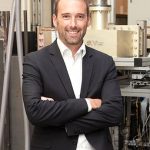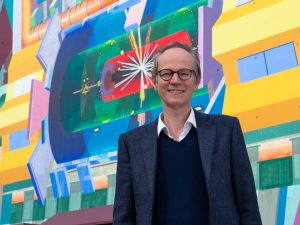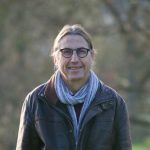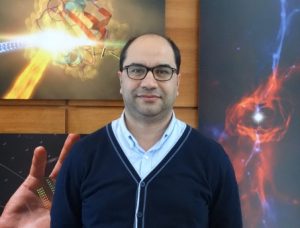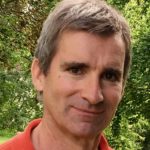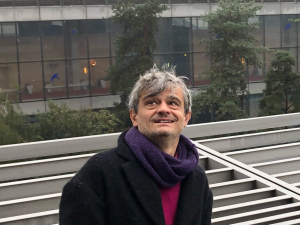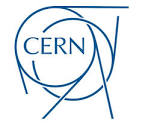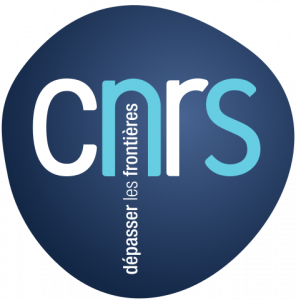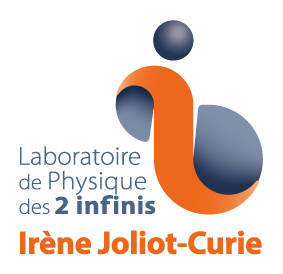Sébastien Bousson
A specialist in superconducting accelerator cavities, Sébastien Bousson spearheads IN2P3’s major particle accelerator projects. He is currently director of the Accelerator Division at the Orsay Institute of Nuclear Physics, which has 95 researchers, engineers and technicians. He started his career developing new methods for particle acceleration and diagnosis of very high intensity proton beams. In 2003, he became head of the « R&D superconducting cavities » group and led design studies of innovative accelerator structures for radioactive ion production and nuclear waste reprocessing projects. He is also working on the development of so-called « spoke » cavities, which provide significant performance gains in particle acceleration. He is currently leading the implementation of this technology in the European Spallation Source, a very high power accelerator dedicated to neutron production, which is being built in Sweden.
Giacomo Graziani
Giacomo Graziani is a researcher in experimental particle physics at INFN, Sezione di Firenze (Italy) since 2004. He obtained a PhD in Physics at the Università di Firenze in 2000, and was granted a Marie-Curie individual fellowship at LAL (Orsay, France) in 2001-2003. He is currently team leader of the Firenze LHCb group, and has been recently convenor of the Ion Physics and Fixed Target working group of the collaboration, pioneering physics with fixed targets using LHC beams. His fields of expertise, acquired through his contributions to major experiments (NOMAD, NA48, ATLAS, BaBar, LHCb, ELI-NP), include flavour physics, data analysis, calorimetry and muon detectors. He served for several years as adjunct professor at the Università di Firenze, teaching data analysis techniques to students in Mathematics.
Andreas Hoecker
Andreas Hoecker’s research in elementary particle physics covers collider physics experiments at CERN and Stanford, USA. He studied physics at Bonn, Germany and earned his PhD at Orsay, France in the 1990s. During that time he studied the properties of the tau-lepton, the heavy cousin of electron, and strong interactions with the ALEPH and OPAL experiments at CERN’s Large Electron-Positron Collider. In 1998 he became Scientist at the French CNRS organisation and joined the BABAR experiment at Stanford’s National Accelerator Lab (SLAC), where he was responsible for the particle identification device and performed studies of matter-antimatter symmetry violation. Since 2005, he is Research Physicist at CERN and member of the ATLAS experiment. He contributed to the fast online selection, commissioning, and searches for the Higgs boson and Supersymmetry. He served as ATLAS Physics Coordinator in 2014 and 2015, deputy Spokesperson between 2017 and 2021, and was elected ATLAS Spokesperson for the period early 2021 to 2023. Throughout his career, Andreas Hoecker has also worked on particle phenomenology and the development of statistical tools.
Michel Jouvin
Michel Jouvin has been working at IJCLab (previously LAL, CNRS/IN2P3) for 30 years. Before becoming the head of the Computing Department at LAL in 2013 and then at IJCLab (50 people involved in software development and computing operations), he has been involved in system management and computing operations. In particular, he has been the technical manager of the GRIF grid site (10000 cores, 10 PB of disk storage), a distributed grid site in Paris region involving 5 laboratories, since its inception in 2005. He has been involved in European grid initiatives since 2001.
He spent a lot of efforts in networking and community building. After chairing the HEPiX forum (2007-2013), a world-wide forum of system/site administrators, he became the WLCG GDB chairman in 2013 during four years.
More recently, he has been one of founder of the HEP Software Foundation. Member of its coordination since the beginning (2015), he was part of the core team who drove the Community White Paper process and did the editorial work.
Walid Kaabi
Walid Kaabi is a Research Engineer at the Irène Joliot-Curie Laboratory (IJCLab), a mixed unit of National Center of Scientific Research (CNRS) and University Paris-Saclay. He is the deputy-director of the Accelerator Physics Department. Its expertise in physics and accelerator technology domain is recognized, notably since he managed the output of 800 power couplers for future machine XFEL (DESY, Germany).
In 2015, he was awarded the Jean-Louis Laclare price of the French Physical Society-Accelerator division intended for the young researcher.
Currently, he is coordinating an international collaboration around the project PERLE, based on the promising accelerator technology of Energy Recovering Linac (ERL).
Abdenour Lounis
Abdenour Lounis is member of University Paris Saclay and Researcher in Particle Physics at LAL on the Orsay campus. He first obtained his Doctorat in Nuclear Physics at Université of Grenoble France and his Phd in Particle Physics at CERN with University of Montreal (Canada). His carrier has been centered around high energy physics experiments either at CERN (DELPHI at LEP, CMS and ATLAS at LHC) or D0 experiment at Fermilab Chicago (USA). His initial research background was the study of large energy flow transverse produced in high energy collisions between protons and nuclei and ions-ions interpreted with theoretical Wounded Nuclear Model or Additive Quark Model. During his research studies, he developped a significant expertise in large instruments namely position sensitive detectors systems ranging from multiwire proportionnal chamber developped by G. Charpak in CERN NA34 experiment, Microstrip gas chambers for CMS experiment, developped by F. Sauli and since fifteen years has been specialised in silicon strip and pixel detectors for large hadron collider experiment. He is actually leading the ATLAS pixel Group at LAL for the construction of the future upgrade of inner Tracker phase.
In parallel to his research, he is heavily involved in teaching Nuclear Physics and Instrumentation in Paris Sud (Licence) and also at the Master-1 level. He was responsible during the last ten years of the Master-1 of Nuclear Energy, a joint program with ParisTech Engineering schools (Centrale, Supelec, Polytechnique, Ecole de Chimie Paris and EDF.
Florent Robinet
After a Ph.D. thesis in hadronic physics (COMPASS experiment at CERN), Florent Robinet joined the Laboratoire de l’Accélérateur Linéaire in Orsay, France (Univ. Paris-Sud CNRS/IN2P3, Université Paris-Saclay) in 2009, first as a post-doc then as a CNRS physicist. Florent Robinet is working on gravitation and cosmology and is an active member of the Virgo collaboration. He is mostly involved in data analysis work, searching for gravitational waves produced by hypothetical objects called cosmic strings. He is also developing new search methods to better separate un-modelled transient signals from noise in the LIGO-Virgo data. Another important aspect of Florent Robinet’s work is about characterizing the noise of the Advanced Virgo detector: he is coordinating the Virgo detector characterization group and developing analysis tools to detect and characterize noise transients in the detector. Since 2017, Florent Robinet joined the SVOM consortium and designs the MXT X-ray telescope which will equipped the SVOM satellite. He is responsible for the development of the on-board scientific software used to locate gamma-ray bursts.
David Rousseau
David Rousseau is senior scientist at Laboratoire de l’Accélérateur Linéaire in Orsay, France (Univ. Paris-Sud CNRS/IN2P3, Université Paris-Saclay). He obtained his PhD on ALEPH from Université Aix Marseille in 1992, then joined ATLAS in 1997. He was involved in many software developments and coordinated the ATLAS offline software developments in 2011-2012. Meanwhile, he was also involved in Higgs boson physics. Then he turned to Machine Learning, organizing the Higgs ML challenge in 2014, and now the tracking ML challenge, both on the Kaggle platform. He is co-coordinator of the ATLAS ML forum.
Marie-Hélène Schune
Marie-Hélène Schune is a researcher at Laboratoire de l’Accélérateur Linéaire in Orsay, France (Univ. Paris-Sud CNRS/IN2P3, Université Paris-Saclay). She obtained his PhD on the Delphi experiment at CERN from Paris-Sud university in 1990. She is curently working in the LHCb experiment at CERN. Her expertise on particle physics and specially on heavy flavours physics has been acquired through the participation in various major experiments: ALEPH and Delphi CERN on the LEP machine, BaBar at SLAC and LHCb at CERN on the LHC collider. Her main achievements are precise measurements of the Bs meson properties, first measurements of CP violation in the B-meson sector, and search for New Physics in rare B decays.
In parallel to her research, she has been active in teaching Particle Physics at the Master-2 level and was responsible of the Master-2 NPAC, a joint program of the Paris universities. She co-created the TESHEP annual school in 2007.
Achille Stocchi
Achille Stocchi is the director of IJCLab (Irène Joliot-Curie Laboratory) on the Orsay Campus of the University Paris-Saclay. He is professor at University Paris-Saclay and researcher in particle physics. He worked on several high energy experiments at CERN (Switzerland) at SLAC (USA) and LNF-Frascati (Italy), leading working groups, leading several master students, doctoral theses and post-doctoral students and having managerial positions (spokeperson, physics coordinator…) in the experiments.
He signed papers of DELPHI, BaBar, SuperB , UA9 and LHCb experiments (over 1000) and about fifty research papers or individual or on small group on detectors, data analysis and phenomenology (founding also the UTFit Collaboration). He has often presented the results of the work at international conferences and seminars (about 100).
He created the biannual Workshop CKM in 2002, co-created the TESHEP annual school in 2007 and co-created in 2016 the WISHEPP annual school in Palestine with An-Najah National University.
